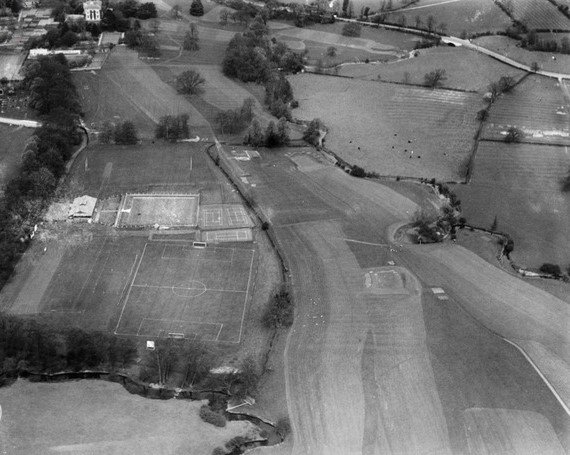
The Grange was founded in the 1920s when Peel Conner, which later became the GEC moved from Salford to Coventry to design and manufacture telephone exchange equipment. A huge tract of land was purchased on which was built the factory and housing for employees.
Included in the estate was the Grange House which was rebuilt in 1870. The house became a residence and club for the senior male staff employees and it was these residents who planned and initiated the golf course construction.
The fourth hole is named after Arthur Bowles who was the greenkeeper and club steward during the 1960s and 70s. The sixth hole is named in recognition of the long standing annual fixture with the Viewfield Golf Society from Scotland and their association with other GEC factories.

In 1968 deep excavations were dug across the course for a new sewage system which were used in the “Italian Job” starring Michael Caine.
In the 1980s Allard Way was built through the middle of the course and as the fortunes of GEC fluctuated during the 1990s, the club’s name also changed from GEC through GPT to Marconi. The club broke away from Marconi in 2006, becoming a private members club and was re named Copsewood Grange.
In 1840, Edward Goodall, a gentleman of Stoke, owned 78 acres of land known as Copsewood estate. A year later, Henry Brown, owned and occupied the estate with a house, outbuildings, pleasure grounds and buildings. Also listed were 10 different plantations, four Hosier needs, a Croft, Road Home Close, Knight’s Close, Peartree Close, Middle Close, Far and Near Sour Dole, Rowley Mill, Moors, Big and Little Barn Close and Peartree Cockpit. The last, now part of the Grange golf course, partly derived from the popular pastime of cock fighting.
A tollgate and gatehouse stood 300 yards on the Coventry side of the Binley bridge not far from the main entrance to the Grange. In November 1772 the toll keeper, Charles Pinchbeck, was robbed and murdered by John Howe of Brinklow and Thomas Farn of Church Lawford. They were both found guilty, a gallows was erected near the scene of the crime and they were hanged.

Mr A.B.Herbert, Mayor of Coventry in 1838, was living in Copsewood House in 1854.He was followed by Charles Dresser, silk merchant, who was Mayor of Coventry in 1857 and died in Copsewood House in 1862. On 8th September 1870, Copsewood House was sold by auction at the King’s Hotel. The old house was demolished and the present Copsewood Grange was erected on the site in 1872 by James Hart, ribbon manufacturer. The date 1870 is on the lodge at the entrance to the Grange with what seem to be Hart’s initials carved in the stone. The estate buildings are said to have cost £5000. Hart’s large factory, the Victoria Mills, was in Lancastrian yard in the Burges, the site now being part of the Debenham’s complex below the Leofric Hotel. With the decline of the ribbon trade, both the Grange and the factory became known as Hart’s Folly. The Grange was sold in 1879 to Mr Richard Moon M.D. of London and North eastern Railway, and he was living there when he was created a baronet. The estate now covered more than 200 acres and include the site of the old Biggin Hall.
After Sir R. Moon, a Mrs Mellowdew and her two daughters lived at the Grange – Mellowdew Road is named after her. Finally the Grange was bought by the GEC for use as a hostel and social centre for its first employees when the manufacture of telephone equipment was transferred from Salford, Lancashire, and was recognised as one of the best staff clubs and was also the clubhouse for the Marconi Golf Club.
In 2006 the Grange fell into disrepair following the closure of the GEC factory, but reopened in 2018 as stylish apartments.
